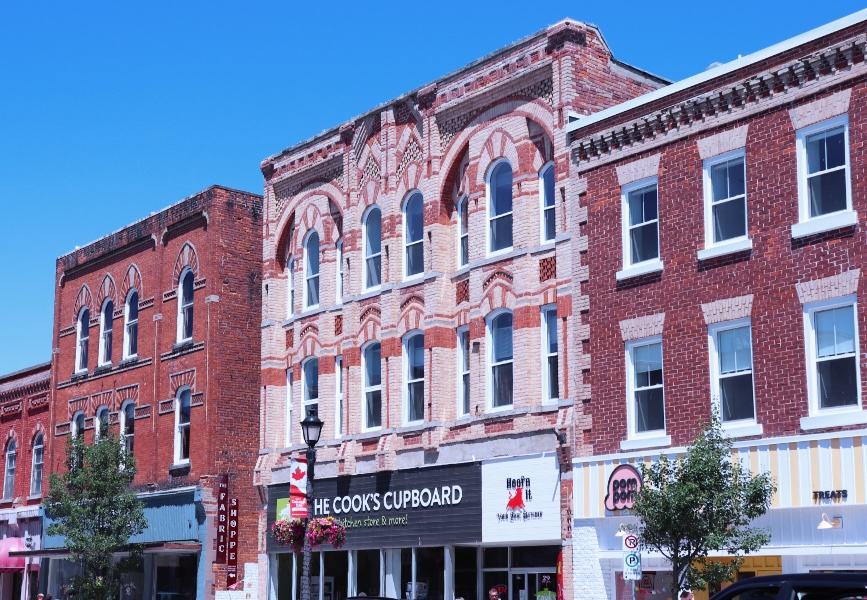Investing in rural areas—whether in downtown Collingwood or on sprawling acreage in Sauble Beach—is a unique opportunity, distinct from typical urban real estate ventures. From cap rate expectations to financing challenges, rural properties come with nuances that investors should understand before diving in.
The Appeal of Rural Properties
Rural properties often attract seasoned investors due to their lower price points compared to urban counterparts. This price difference reflects the lower population density and its impact on supply and demand dynamics. However, the type of property—whether mixed-use, residential, commercial, or industrial—is crucial to consider, as markets vary significantly by location.
Commercial Properties: Challenges and Potential

Investing in commercial properties in small towns can be tricky. Leasing out office or retail space is often challenging due to limited demand and competition from online retailers. In Southern Georgian Bay, for instance, retail space rents are surprisingly low, and professional services like accountants or lawyers often occupy spaces originally intended for retail or dining.
The key to success with rural commercial properties is having a clear plan—or sometimes just seizing a promising opportunity. Fortunately, lower carrying costs for rural properties often provide the financial flexibility to wait for the right tenant, ensuring long-term returns.
The Versatility of Mixed-Use Properties
Mixed-use properties—combining commercial space with residential units—are among the most attractive investment options in small-town cores. These properties offer a balanced income stream, with residential rentals often in high demand across Southern Georgian Bay. The combination of stable residential income and potential upside from commercial tenants creates a winning formula for many investors.
Industrial Properties: Adapting to Changing Markets
Industrial properties are commonly found on the outskirts of rural towns. Over the years, many traditional industrial spaces have been repurposed for strip malls, car dealerships, and warehouse-style investments. With flexible zoning, industrial properties often cater to niche markets like indoor/outdoor storage—a sector showing strong growth in the region.
Residential Rentals: Seasonal Opportunities

For investors looking at residential rental properties, proximity to amenities is key. Near ski resorts, for example, seasonal rentals can yield exceptional returns during winter. Similarly, summer rentals in rural locations with recreational appeal often deliver strong results. Properties closer to the slopes excel in winter, while large acreages outside town shine during the summer. This dual-season appeal makes residential rentals an attractive option for investors who also want personal use of the property.
Short-Term Accommodations: Post-Pandemic Adjustments
Short-term accommodations (STAs) boomed during the pandemic, delivering excellent returns from 2020 to 2023. However, as travel restrictions eased, demand dropped sharply. Local bylaws governing STAs vary widely across regions, so investors need to do their homework. While demand has softened, adjusting pricing to meet market realities could stabilize this segment, creating long-term opportunities.
Financing Rural Properties: Unique Challenges

Financing rural investment properties differs significantly from urban real estate. Major banks often impose stricter lending criteria based on population density, reducing loan-to-value (LTV) ratios from 75% to 50%. For instance, on a $1,000,000 property, a bank may lend only $500,000. However, owner-occupied properties, where the investor uses at least half the space, can sometimes qualify for more favorable terms.
Cap Rates and Returns: A Compelling Case for Rural Investments
Rural properties typically offer higher cap rates than urban ones. In many small towns, cap rates of 7–10% are not uncommon, making these investments highly attractive for those who don’t require heavy bank financing. With the right property mix and management, it’s possible for some investments to pay for themselves within a decade—a remarkable return by real estate standards.
Final Thoughts
Investing in rural properties requires a blend of strategy, patience, and a clear understanding of the market. Whether you’re considering mixed-use properties, industrial spaces, or seasonal residential rentals, the opportunities are diverse and rewarding.
At Creed & Co Realty, we have extensive experience working across Southern Georgian Bay and can guide you through the complexities of rural real estate investment. Whether you’re a seasoned investor or just starting, we’re here to help you navigate the unique opportunities rural properties offer.






No responses yet